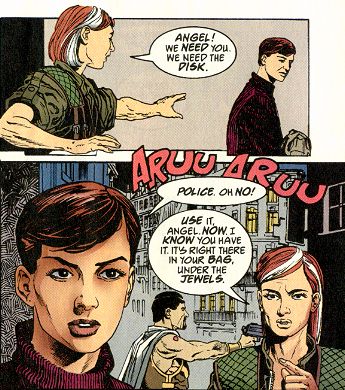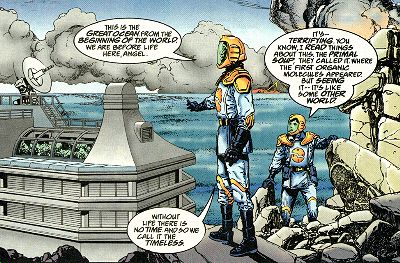Time Breakers

 Nearly all science fiction involving time travel insists that either: A) time cannot be changed, or B) if time is changed, Bad Things will happen. Option A goes all the way back to the Greek story of Cassandra, who was blessed with sight of the future, but cursed that no one would heed her warnings. Option B is probably more recent (reflecting modern concern about humanity’s impact on our environment), but equally prevalent.
Nearly all science fiction involving time travel insists that either: A) time cannot be changed, or B) if time is changed, Bad Things will happen. Option A goes all the way back to the Greek story of Cassandra, who was blessed with sight of the future, but cursed that no one would heed her warnings. Option B is probably more recent (reflecting modern concern about humanity’s impact on our environment), but equally prevalent.
The reason for these rules is that existence (or non-existence) of paradoxes. The classic example is the idea of going back in time to kill your parents before you were born. It’s impossible, because doing so would prevent you from being around to do it. But what if those kinds of paradoxes were not only possible, but actually essential to the existence of life? That’s the premise of Rachel Pollack’s Time Breakers.
 This 5-issue series is my favourite of the offerings from DC’s new “Helix” line. That’s probably because it’s the least “dark”… both in terms of the setting, characters, and events… and of the art. I prefer stories that don’t take place entirely at twilight or in poorly-lit, windowless rooms.
This 5-issue series is my favourite of the offerings from DC’s new “Helix” line. That’s probably because it’s the least “dark”… both in terms of the setting, characters, and events… and of the art. I prefer stories that don’t take place entirely at twilight or in poorly-lit, windowless rooms.
Weston’s art is definitely the most “accessible” of the artists doing work for Helix so far. It’s realistic, clean, and consistent, which is essential to this series because so many of the clues as to what’s going on are visual in nature. For example, you can guess by looking at them that (minor spoiler) the middle-aged woman who visits young Angela in the first issue is the same character, years older.
I’m a little hestitant to describe Pollack’s dialog as “realistic”, because the characters tend to do a lot of exposition with each other, explaining the nature of paradoxes and fitting the pieces of the puzzle together for the readers. But it fits in well with the flow of the story, doling out bits and pieces as the story goes along. And maybe if I were involved in a secret consipracy to create paradoxes, or a counter-conspiracy to prevent them, I might be prone to say things like, “I would like you to meet Hamilton Shaw, the man who didn’t write Hamlet.” {grin} They are an interesting (if enigmatic) bunch, and I especially like the central character Angela, a woman who grows to cast off her stifling “wealthy 1950’s housewife” role to become a key player in this grand scheme, and architect of its (im)possible fulfillment.
 Pollack uses one of my favourite paradoxes to explain the invention of time travel: a time traveller from the future gave the necessary information to the inventor. The story is full of such impossibilities, and I had fun figuring them out. In this sense, Time Breakers is a mystery, asking not “Whodunnit?” but “How will/did they do it?”
Pollack uses one of my favourite paradoxes to explain the invention of time travel: a time traveller from the future gave the necessary information to the inventor. The story is full of such impossibilities, and I had fun figuring them out. In this sense, Time Breakers is a mystery, asking not “Whodunnit?” but “How will/did they do it?”
Writing an internally consistent time-travel story is probably almost as impossible as becoming your own grandmother, but Pollack has done a pretty good job. There were a few paradoxes alluded to that seem contrary to the way Pollack’s time travel works (i.e. two characters who never had a “first” meeting, but have just “always” known each other), but they aren’t important to the story. And she falls back on the same notion of a time frame outside of time that made DC’s big Zero Hour event in 1994 a bit hard to swallow. But her Grand Paradox was an elegant one, which I figured out just a couple panels before Angela did, which I regard as pretty good, um… timing.
The story works fairly well in 5-part serial form, though that makes it a bit of a bother to pick up now, after the fact. I hope that the folks at Helix collect the 5 parts and reprint this in a single volume (which they could probably price at $9.95). It would seem a shame to let a good skiffy tale like this to go out of print and vanish into the past.
